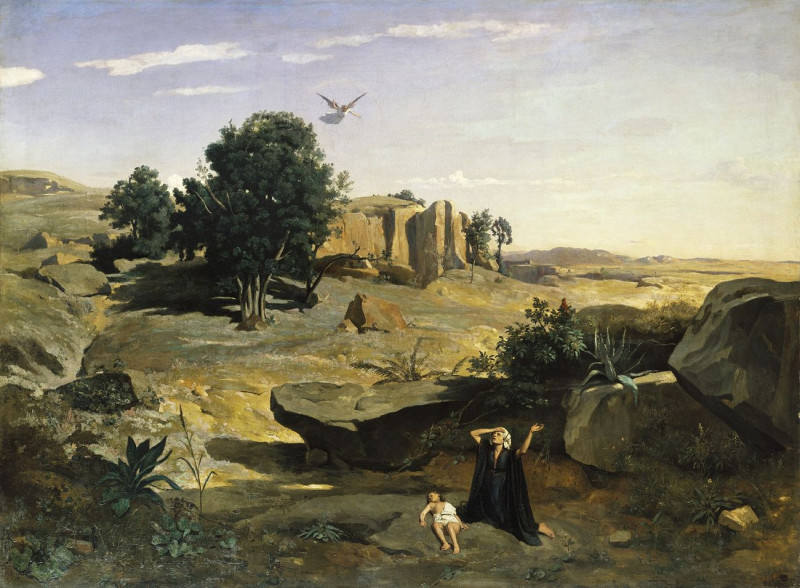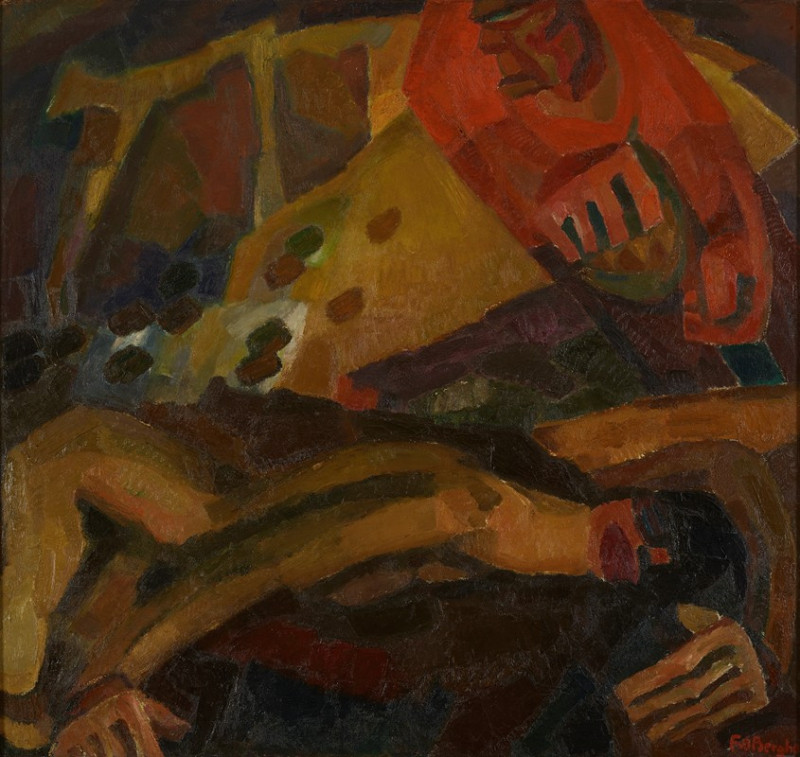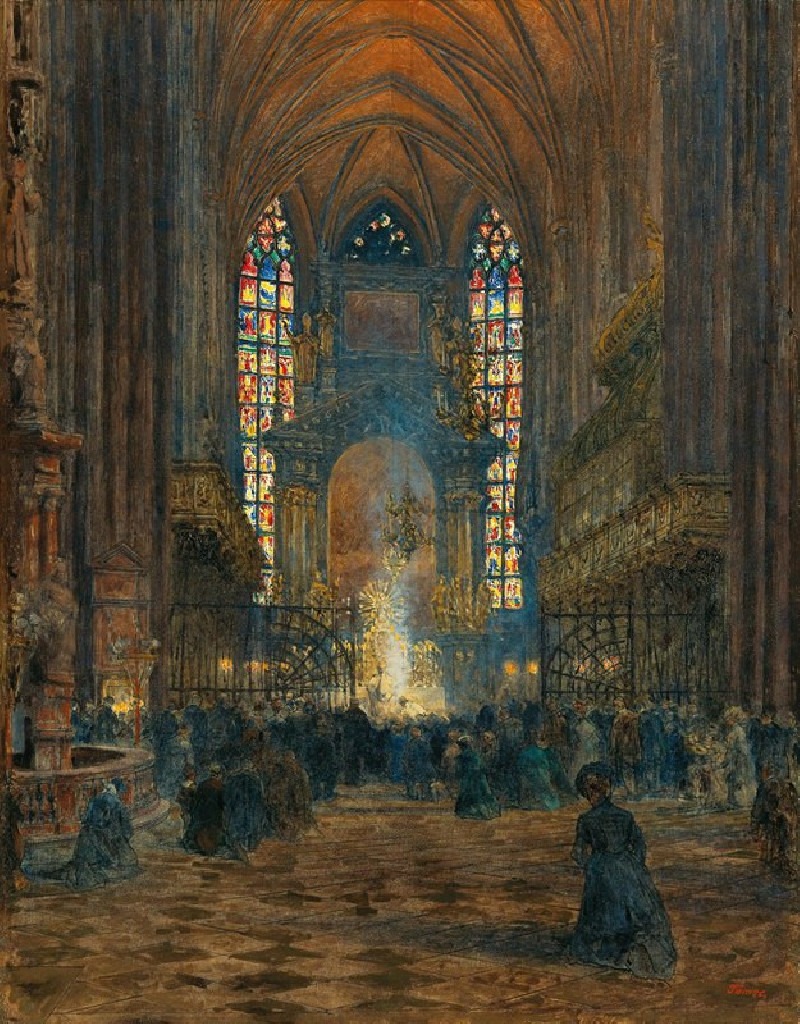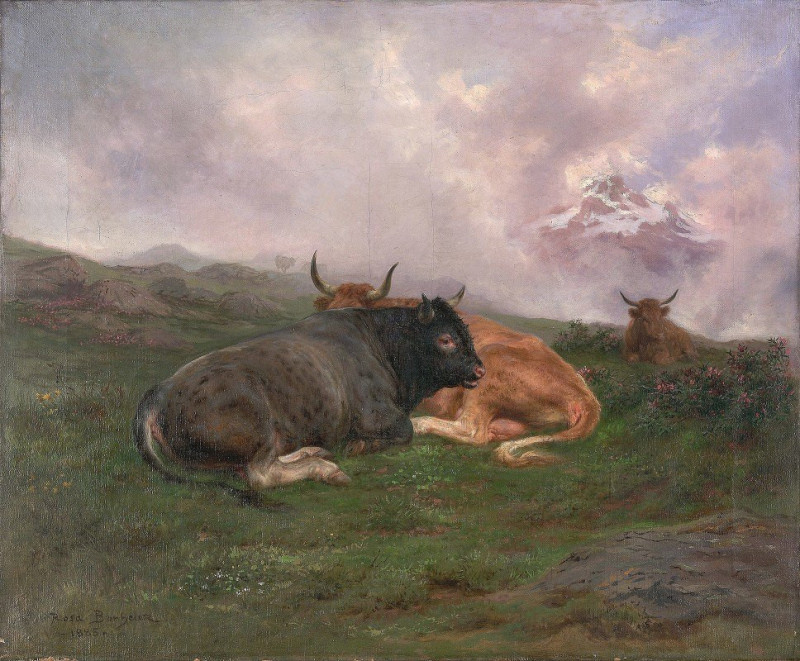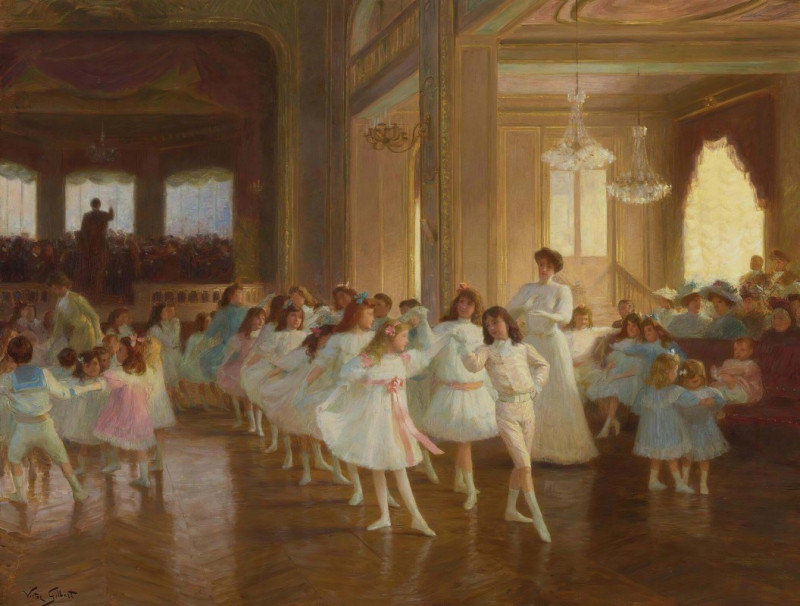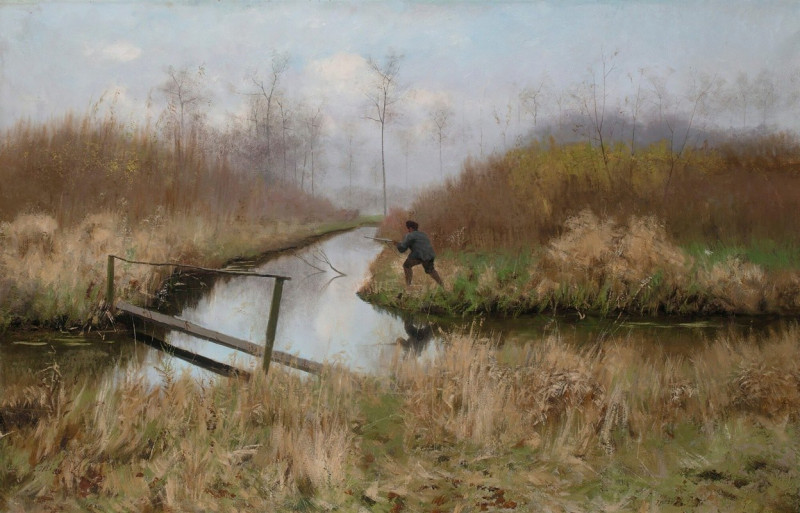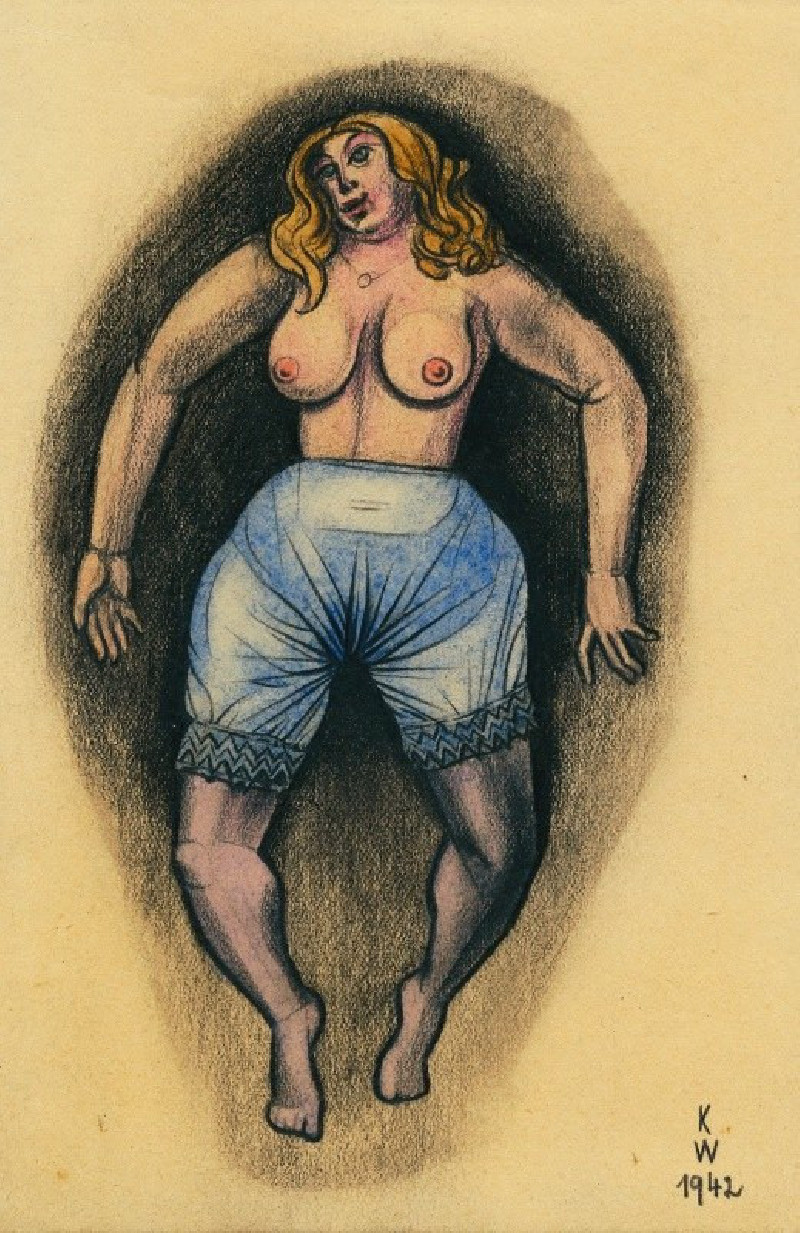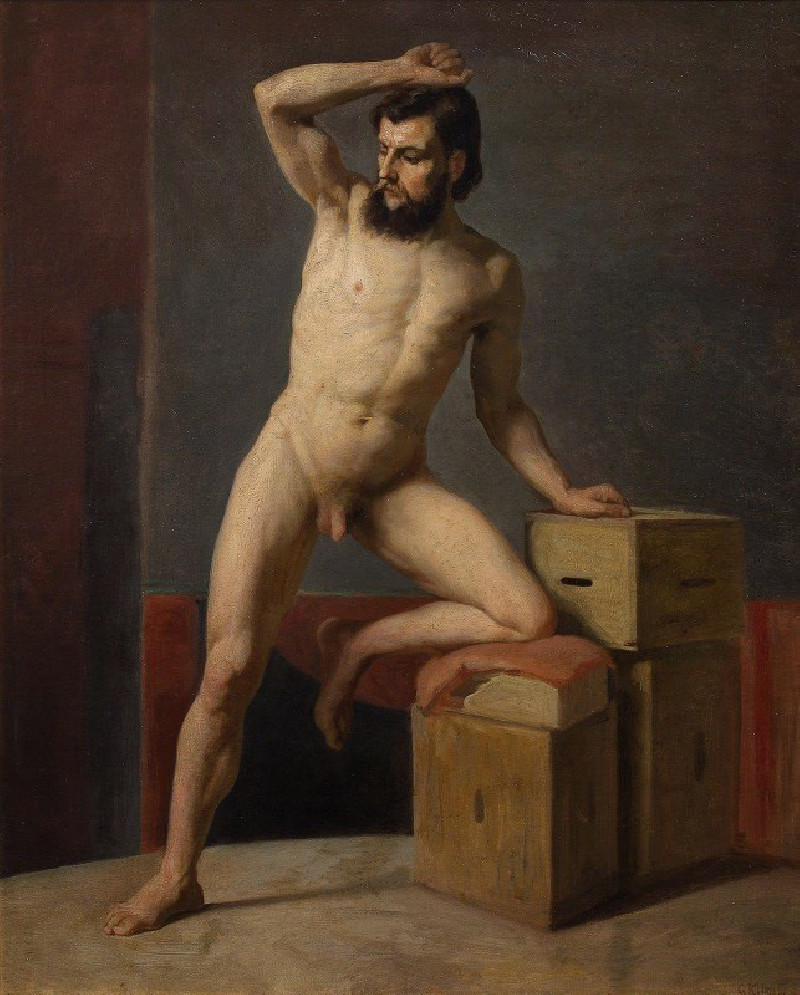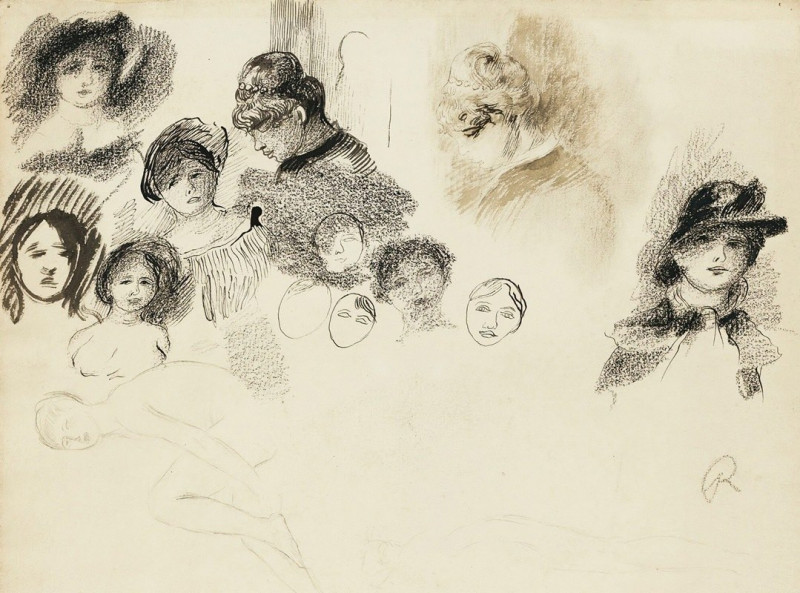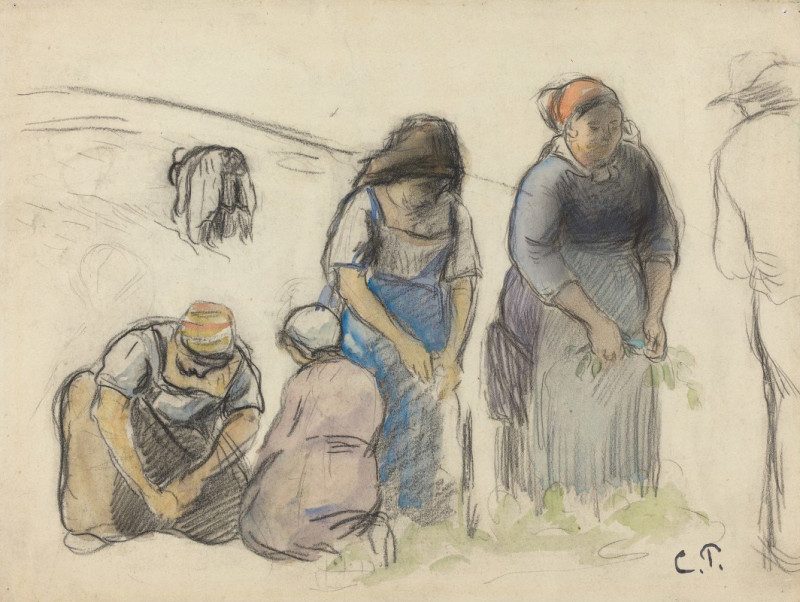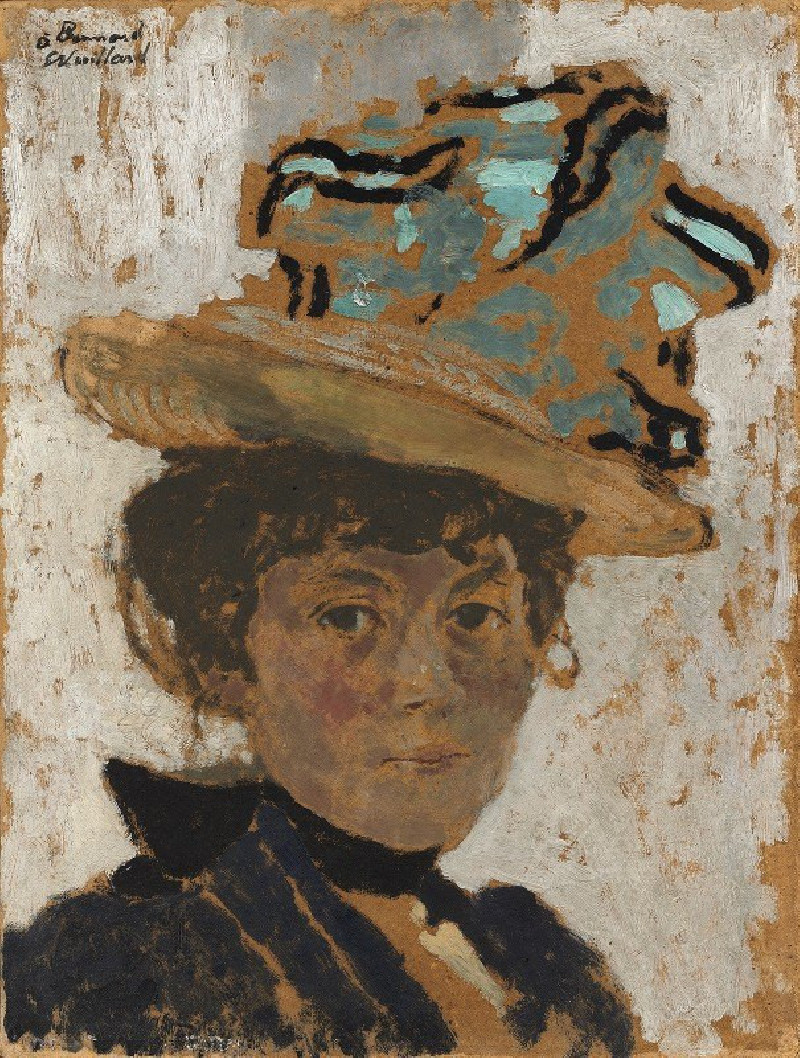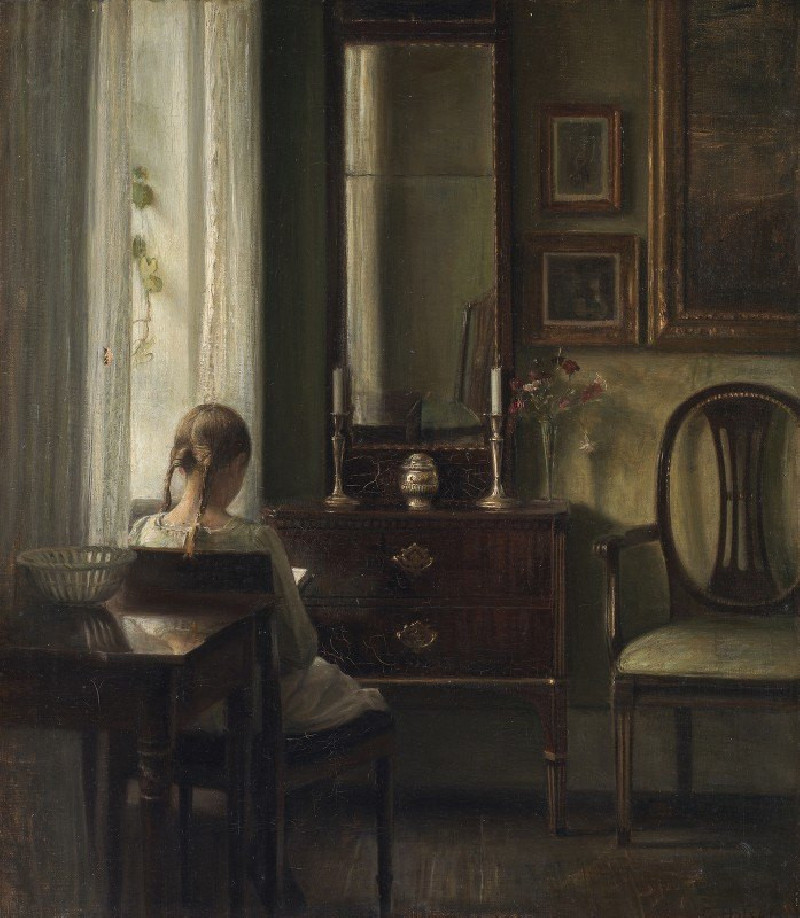Hagar In The Wilderness
Technique: Giclée quality print
Recommended by our customers
More about this artwork
This painting, "Hagar in the Wilderness" by Camille Pissarro, dramatically portrays the biblical story of Hagar, the Egyptian maidservant of Sarah and her husband, Abraham. Abandoned in the desert with her son Ishmael, Hagar is depicted here in a moment of despair and divine intervention.The landscape is dry and expansive, indicating the harsh environment of the wilderness. The foreground features Hagar and Ishmael; Hagar is seen in an expressive pose, looking upwards - perhaps pleading for mercy or reacting to a vision. She wears a dark robe, suggesting her mourning and distress. Beside her, Ishmael appears frail and exhausted, further emphasizing the severity of their plight.Interestingly, the painting shows a surreal element – a modern helicopter hovering in the sky, which is not a part of the original biblical narrative nor would it be a subject in Pissarro’s era. This anachronism might suggest a digital modification or an error in the image you’ve shown. Typically, one would expect to see an angel or a divine symbol representing God's response in the story, providing Hagar with guidance or assurances of Ishmael’s future.Pissarro's use of rugged terrain and a clear, expansive sky likely attempts to evoke the vulnerability and isolation of the figures, while also hinting at the omnipresence and mercy of God as per the narrative.
Delivery
Returns
Blessed are they who see beautiful things in humble places where other people see nothing. — Camille Pissarro
Camille Pissarro (1830-1903) was born on St.Thomas (now the US Virgin Islands) to a Portuguese father and a Dominican mother. He went to Paris to study art at Ecole des Beaux-Arts. He was an early pioneer of pointillism and neo-impressionism and later became a mentor of many famous impressionist painters including Cezanne, Manet, Renoir, and Gauguin. His paintings depicted rural and urban French landscapes and lifestyle. Many of his works politically captured images of peasants and laborers. Today, he is considered the father of impressionism.

